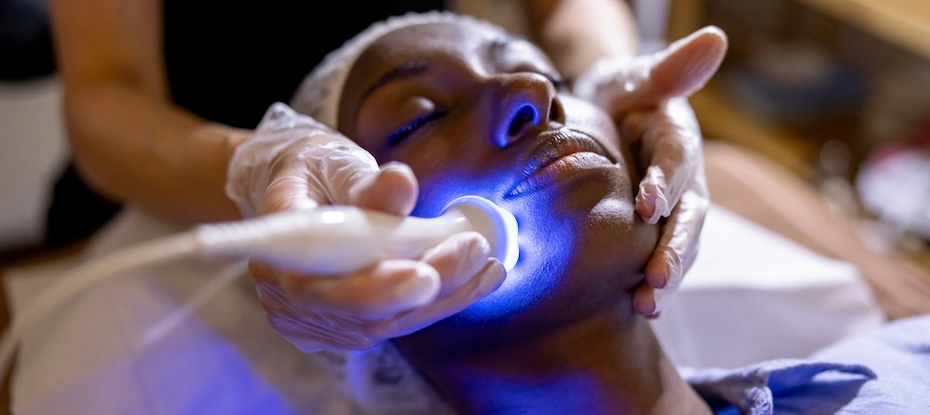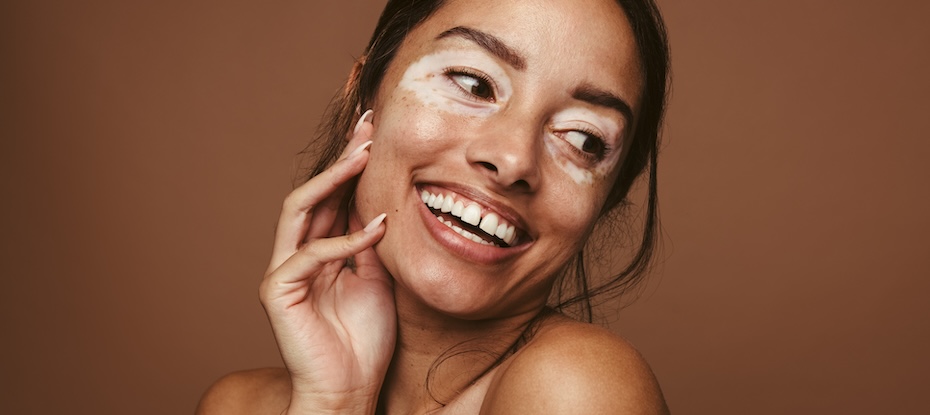
With alternative and supplementary treatments constantly emerging, UVB light therapy brings a compelling solution for those battling certain skin conditions, mood disorders, and immune system challenges. UVB light (ultraviolet B) is a portion of the natural sunlight spectrum, and its role in medical therapy has shown promising results in clinical settings and UVB light therapy at home.
What is UVB Light Therapy?
UVB light therapy involves exposing the skin to an artificial UVB light source that mimics the UVB spectrum of sunlight. This form of therapy is primarily used to treat various skin disorders, boost vitamin D production, and potentially improve mental health conditions. The effectiveness of UVB light lies in its ability to influence cellular processes, including DNA repair and the synthesis of vitamin D, which is crucial for bone health and immune function.
In Australia, UVB light therapy at home is growing in popularity due to its accessibility and convenience. Patients are now able to undergo treatments from the comfort of their homes with the right equipment and medical guidance.
Historical Overview of UVB Light Therapy
The therapeutic use of sunlight dates to ancient civilisations, but the modern use of UVB light therapy began in the early 20th century. Niels Finsen, a Nobel laureate, is often credited with pioneering the therapeutic use of light after he developed a treatment for skin tuberculosis using ultraviolet light.
Over the decades, UVB therapy has evolved significantly with technology advancements that allow for safer and more effective treatment options. Today, UVB lamps and devices emit precise doses of narrow-band UVB light, minimising harmful effects while maximising therapeutic benefits.
Insightful Benefits of UVB Light Therapy
- Enhancing Vitamin D Production
One of the most well-known benefits of UVB light therapy is its ability to enhance the body's production of vitamin D. Unlike dietary or supplementary vitamin D, UVB-induced synthesis of vitamin D occurs naturally in the skin, leading to better regulation and utilisation by the body. This is particularly beneficial during the winter months or in regions with limited sunlight exposure, helping to prevent vitamin D deficiency, which is linked to a range of health issues, including osteoporosis, depression, and weakened immune function. Those using UVB light therapy at home in Australia often experience improved vitamin D levels and overall wellbeing. - Treatment of Skin Conditions
UVB light is most commonly used for the treatment of several chronic skin conditions. Some of these include:
a. Psoriasis: an autoimmune disorder characterised by rapid skin cell growth resulting in thick, red, scaly patches. UVB light therapy can slow down the abnormal growth rate of skin cells, reducing scaling and inflammation. According to research published in the Journal of the American Academy of Dermatology, UVB light is highly effective in treating psoriasis, with over 70% of patients achieving significant improvement or complete clearance of psoriasis plaques.
b. Eczema (or atopic dermatitis): causes intense itchiness and inflammation of the skin. UVB light reduces the inflammatory response of the skin and helps control itching. For many sufferers, UVB therapy can decrease the reliance on topical steroids and other medications.
c. Vitiligo: involves the loss of skin pigment, creating contrasting white patches. UVB light can stimulate melanocytes, the cells responsible for skin pigment, promoting repigmentation in the affected areas. Although the process is gradual, many patients see positive changes over time.
These therapies are accessible both in clinics and via UVB light therapy at home, depending on individual needs.

- Potential Anti-Depressive Properties
Seasonal Affective Disorder (SAD), a type of depression related to changes in seasons, often worsens during periods of less sunlight. UVB therapy may help alleviate depressive symptoms by simulating sunlight, resetting the body’s circadian rhythms, and promoting the production of serotonin, a mood-regulating neurotransmitter. If you're searching for "UVB light therapy near me," many dermatology clinics now offer this treatment for SAD and other mood-related conditions. - Boosting Immune System
UVB light therapy boosts the immune system primarily by promoting the synthesis of vitamin D in the skin. Exposure to UVB light converts a naturally occurring substance in the skin into vitamin D3, a critical nutrient that enhances immune function. Adequate vitamin D levels are crucial for maintaining a balanced immune response and protecting against autoimmune diseases and infections. Consistent therapy—whether clinical or UVB light therapy at home—can help maintain optimal vitamin D levels year-round.
Understanding Narrow Band UVB Light Therapy Side Effects
Narrow band UVB light therapy is widely considered one of the safest and most effective forms of phototherapy, particularly for chronic skin conditions. However, like any medical treatment, it’s not entirely free from side effects.
While the narrow band wavelength (311–313 nm) is specifically chosen to reduce risks and improve outcomes, some people may still experience side effects with continued or improper use.
Common Side Effects Include:
Redness or Mild Sunburn: Temporary skin irritation, resembling a sunburn, can occur after treatment—especially if exposure time isn’t properly adjusted.
Dry or Itchy Skin: Some patients report dry patches or itchiness following sessions. These are usually mild and can be managed with moisturisers.
Freckling or Pigment Changes: Hyperpigmentation or freckling may appear in areas exposed to repeated light treatment, especially in those with fair skin.
Blistering (Rare): Overexposure or sensitive skin may lead to blistering. This is uncommon but highlights the importance of professional guidance, even when using UVB light therapy at home.
Long-Term Considerations
Though narrow band UVB light therapy side effects are typically mild, long-term overexposure could theoretically increase the risk of premature skin ageing or skin cancer. However, studies show that with proper protocols, this risk remains very low compared to other light-based or systemic treatments.
To minimise side effects:
Always follow a structured treatment plan
Wear protective eyewear
Use moisturiser after sessions
Consult your healthcare provider regularly
Whether you're undergoing narrow band UVB therapy in a clinical setting or exploring UVB light therapy at home in Australia, understanding and managing these potential side effects is key to a safe and successful treatment journey.
How to Use UVB Light Therapy Safely
While UVB light therapy can bring wonders, it is not without risks. It is crucial to understand how to use this treatment safely to minimise potential narrow-band UVB light therapy side effects such as skin burns, premature skin aging, and an increased risk of skin cancer.
- Recommended Duration and Frequency: Treatment protocols can vary, but it is generally recommended for UVB light therapy to be administered two to three times per week, with each session lasting from a few seconds to several minutes, depending on the intensity of the light source and the condition treated.
- Understanding Potential Risks and Side Effects: Users should be aware of the risks associated with UVB light therapy and should always use the therapy under medical guidance. Be mindful of protective measures such as wearing goggles to protect the eyes and limiting the exposure of healthy skin.
- Tips for Safe Usage at Home vs. Clinical Settings: While UVB light therapy at home can be effective and safe with the right equipment, it is advisable to start treatments under professional supervision. A dermatologist can guide the appropriate device, settings, and duration of treatment to ensure safety and effectiveness.
UVB Light Therapy Vs. Other Treatments
UVB light therapy often stands in contrast to other forms of treatment, such as UVA light therapy or conventional pharmaceutical interventions.
UVA requires the use of a medication called psoralen to be effective and carries a higher risk of side effects. On the contrary, UVB therapy does not require additional medications and is considered safer for long-term use.
When comparing UVB light therapy with topical steroids or systemic medications, light therapy offers a non-invasive alternative with fewer systemic side effects, such as skin thinning, and resistance linked to long-term use of topical steroids. Similarly, systemic medications, which work internally to treat symptoms, often come with a risk of side effects and require ongoing monitoring. Those seeking a drug-free approach often turn to UVB light therapy near me options for a more holistic solution.
Can You Get UVB Light Therapy at Home in Australia?
Absolutely. With advancements in home medical devices, UVB light therapy at home Australia options are now widely available. Portable units designed for personal use allow patients to follow prescribed treatment plans from their own homes.
Before starting, consult a healthcare provider to ensure you're selecting the right equipment and following a safe treatment schedule. This flexibility makes UVB therapy more accessible than ever across urban and regional areas in Australia.
Future of UVB Light Therapy
The future of UVB light therapy looks promising with ongoing advancements in light technology and a deeper understanding of light’s physiological effects. Researchers are exploring the use of UVB light in treating other conditions, such as type 1 diabetes and multiple sclerosis, where immune modulation might play a therapeutic role.
Conclusion
UVB light therapy offers a powerful, science-backed solution for a range of skin and mood-related conditions. Whether administered in a clinical setting or via UVB light therapy at home, this form of treatment continues to transform lives.
Ready to prioritise your health and explore new treatment options? Get a quote for Healthy Lifestyle Cover today and discover how to access UVB light therapy and other beneficial services. Take the first step towards empowered decision-making and enhanced well-being by exploring UVB light as a treatment option. Your health insurance journey can start now.
FAQs About UVB Light Therapy
What conditions can UVB light therapy treat?
UVB light therapy is primarily used for treating various skin conditions such as psoriasis, eczema, and vitiligo, which benefit from its anti-inflammatory and immunomodulatory effects. It is also effective in treating mood disorders like Seasonal Affective Disorder (SAD), where the light acts similarly to natural sunlight to improve mood and energy levels. Additionally, UVB therapy is being researched for its potential benefits in other autoimmune diseases and certain types of skin cancers.
Is UVB light therapy safe?
Under proper guidance, UVB light therapy is a safe treatment option with manageable risks. It is essential to follow a healthcare provider’s instructions regarding the duration and frequency of exposure to minimise side effects such as skin burns or long-term risks like skin aging or cancer. Protective measures, including using goggles and limiting exposure to non-affected skin, are also essential to ensure safety during treatment.
How long does it take to see results from UVB light therapy?
Results from UVB light therapy can vary depending on the condition treated and the individual’s response to treatment. Many patients see noticeable improvements within a few weeks of starting treatment. However, conditions like psoriasis may require longer and more consistent treatment sessions to achieve and maintain clearance of the skin symptoms.
Can I do UVB light therapy at home in Australia?
Yes. UVB light therapy at home Australia options are available, but should always be used under medical supervision to ensure safe and effective treatment.
How long before I see results from UVB light therapy?
You may notice improvements within a few weeks, though conditions like psoriasis may require consistent treatment over a longer period.
Where can I find UVB light therapy near me?
Search for local dermatology or wellness clinics offering UVB light therapy near me. Many clinics also provide at-home equipment options.